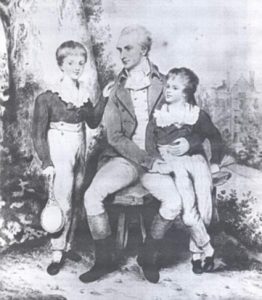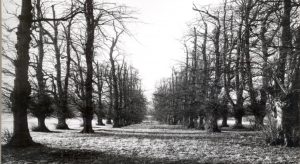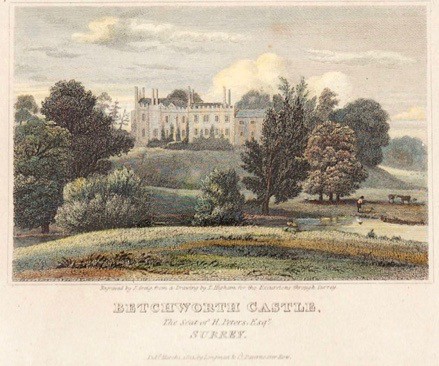
© Dorking Museum
The origins of Betchworth castle
Betchworth Castle was the manor house for the manor of West Betchworth. The manor stretched from Boxhill in the north to Fourwents Pond in the south. Castle Mill was its watermill.
After the Norman Conquest, the Overlord was Richard de Tonbridge, Lord de Clare, who based himself at Bletchingley Castle and subinfeudated (sub-let) West Betchworth to others for a fee. The lord of the manor of West Betchworth was meant to go to the Bletchingley manor court every three weeks’, but usually paid a fine instead.
In 1379 the manor obtained a licence to have a deer park and to be crenelated (battlements added to the castle). This means the owner was trusted by the King. The 360 acre deer park includes the modern day golf course and the fields as far as Old School Lane / Parkpale Lane / Tilehurst Lane. The public roads had to go round the deer park. Although known as Betchworth Castle, it is better described as a fortified manor house, of the kind lived in by powerful nobles. (The light defences may be why Betchworth Castle survived the Civil War, inspite of being Royalist, when Reigate and Guildford castles were slighted (partially destroyed to stop them being used)).
Do we know who lived in the Castle?
During King Edward 1’s reign the manor and many others were owned by John de Berwick a trusted judge and troubleshooter for the King. He was to Treasurer and an executer to Queen Eleanor.
We know King Edward I stayed at Betchworth Castle on May 14th 1294 on his way to Chichester via Horsham. The king and his retinue had stayed the night before at Bletchingley, then a day’s travel.
Who else lived in the castle?
In the 14th and 15th centuries, the Arundel family – Fitzallans / Lord Maltravers – held West Betchworth. We know they obtained the ‘licence to crenelate’ of 1379.
The last of the Arundels, Eleanor, married Sir Thomas Browne – Treasurer to King Henry VI in the 1440s and 50s and a sheriff of Kent on three occasions. In 1448 he obtained a second licence to crenelate the castle and to create a deer park. The sweet chestnut trees, that still survive, may have been planted then.
Eleanor and Sir Thomas were Lancastrian in the war of the Roses. Sir Thomas lost his rights after the Battle of Northampton and was beheaded, but the castle belonged to Eleanor, so she retained it.
She remarried to another Lancastrian – Thomas Vaughan, Keeper of the King’s wardrobe.
In 1461 the Lancastrians lost the Battle of St Albans and Thomas escaped with the King’s treasure and set sail to Ireland for safety. However he was captured by pirates and ransomed. The Yorkist King Edward IV paid the ransom and so Thomas promptly changed allegiance, rising to Master of the King’s jewels. Thomas Vaughan was knighted and became chancellor to the two princes who were later put in the Tower of London. Sir Thomas Vaughan and Elinor’s son George were arrested and executed at Ludlow in 1483. Again as the castle belonged to Eleanor, she kept it and passed it onto her grandson, Sir Matthew Browne, once he had been forgiven by the king for his father’s actions!
Sir Matthew son, Thomas, held the castle from 1557-1597 and it was probably he who built most of what survives today. He also owned one quarter of the Manor of Dorking and was a benefactor of the Cotmandene Almshouses. (The Howards of Arundel owned the other three quarters of the manor).
In 1691 the last Browne, Margaret, married William Fenwick. He did not want to live in a draughty old castle so demolished three quarters of the castle to turn it into a “small dwelling”.
The medieval tower was demolished in 1690s and new services and stables built

Photo courtesy of Surrey History Centre
Fenwick’s demolition resulted in a more modest country house and a longer terrace.
Abraham Tucker planted the lime avenue and created the formal lake and fountain. Springs feed the pond. A water-mill powered pump to power the fountain still survives down Castle Gardens. It would also have pumped water up to the castle.
Betchworth Park was the final major addition to the Deepdene estate purchased by Thomas Hopes son, Henry Hope, for £19,000 in 1834. The site includes the only remaining medieval fortified manor house in Surrey, Betchworth Castle. Whilst little remains of the castle the parkland has a number of magnificent Sweet Chestnut trees which date back to the emparkment of the estate in 1449.
The site is of particular interest as it was remodelled by Sir John Soane from 1798 – 1800 for the banker Henry Peters.
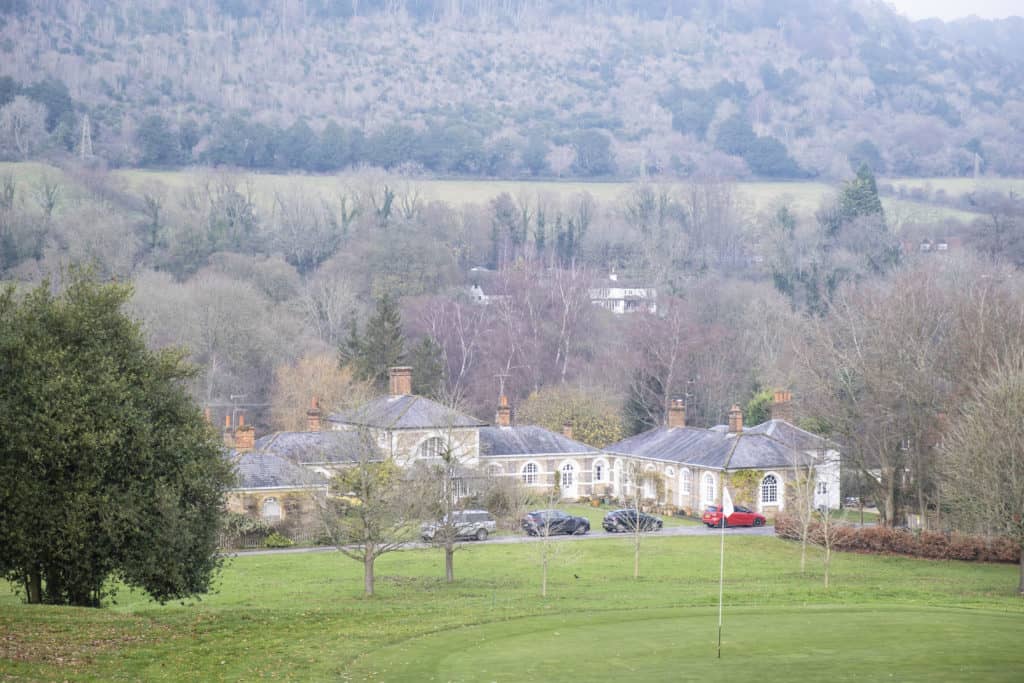
Photo courtesy of Lois Leyland
The stable block whilst converted to houses can still be seen at the bottom of the slope.
Once the estate was purchased by Henry Hope the house was let to the Barclay family of Bury Hill briefly before Hope dismantled part of the house to leave a romantic ruin. A significant feature of the site, of which remnants survive is the ornamental lime avenue.
Whilst much of the avenue was felled in the 1960’s some of the trees remain and the new access road largely follows the original route.
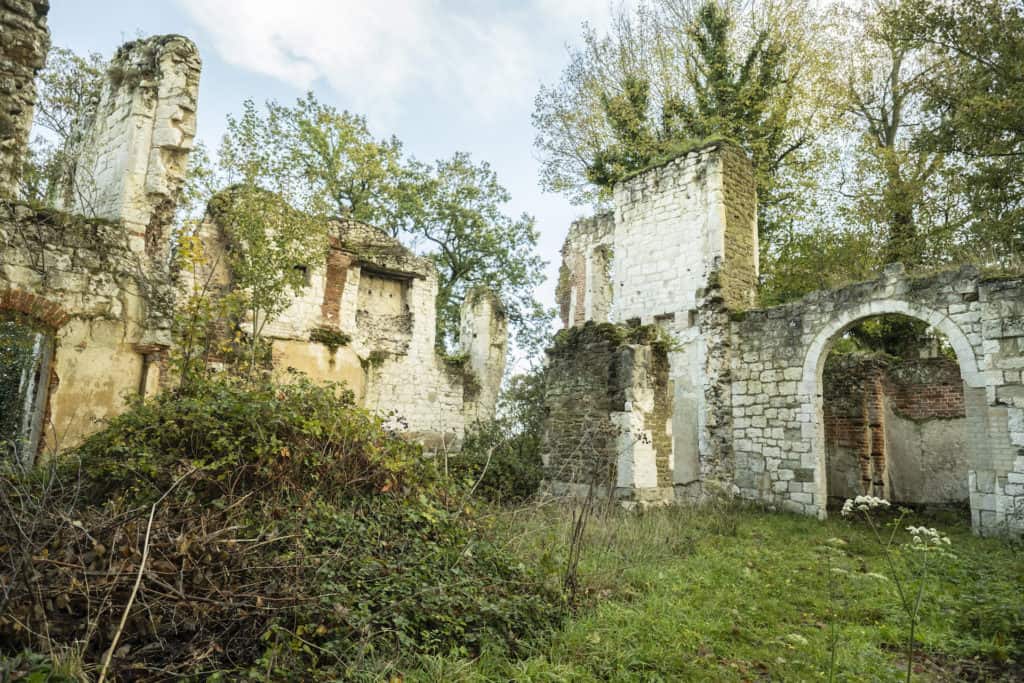
Photo Courtesy of Lois Leyland
Betchworth Castle was purchased in 2011 by architectural historian Martin Higgins, who with money from Mole Valley District Council has been able to secure funding from a number of bodies, such as English Heritage and Surrey Historic Buildings Trust, which has totalled nearly £300,000. He has been able to secure the standing remains which were on the verge of collapse. The Friends of Deepdene are now helping to improve access to the buried cellars and manage the scrub growth in the castle grounds.
Dorking Museum runs walking tours of Betchworth Castle during the summer months.
Next : Bury Hill

